Ancient Basilica Cistern: Intriguing Hidden Subterranean World With Medusa Heads
A. Sutherland - AncientPages.com - The astonishing Basilica Cistern, or the "Sunken Palace," is located underneath the streets and houses of Istanbul, Turkey. It is a marvelous hidden subterranean world decorated with two Medusa heads.
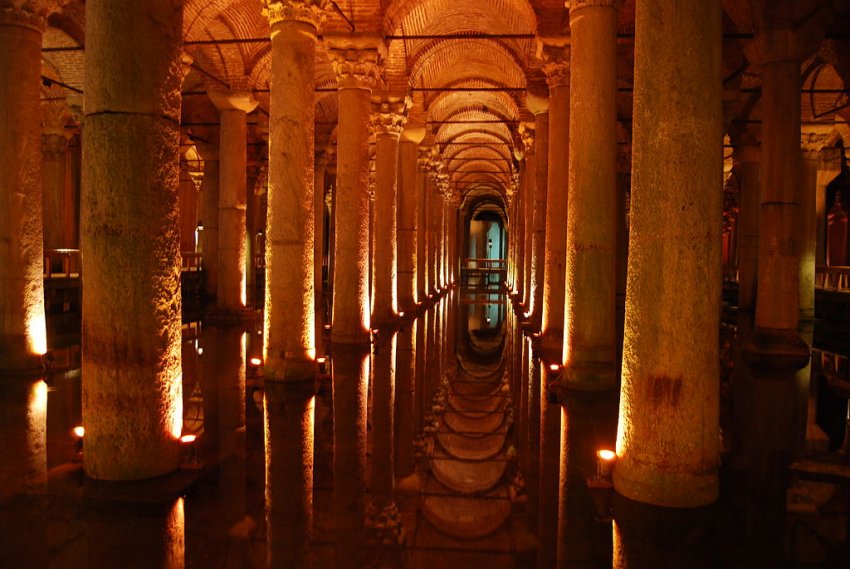 Image credit: Wikipedia - Dpnuevo
Image credit: Wikipedia - Dpnuevo
In 1545, Peter Gyllius, a Frenchman visiting Constantinople, heard remarkable stories of locals drawing up fresh water and fishing from holes in their cellars. He became so intrigued by these fascinating stories and the legends of great underground temples that he decided to explore and find this mysterious place.
Upon further investigation, he rediscovered a subterranean marvel, the largest of the long-forgotten palatial cisterns of the Byzantine Empire.
Fish swam in an artificial freshwater lake the size of two football fields, and the vaulted brick ceilings were held up by 336 thirty-foot pillars taken from nearby Roman ruins.
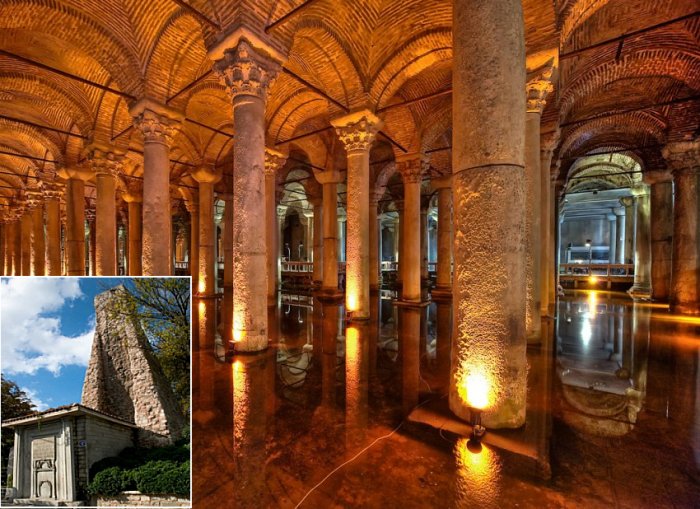 Left: The entrance to the Basilica Cistern. Image credit: Wikipedia - David Bjorgen; Right: Basilica Cistern, also known as the "Sunken Palace"
Left: The entrance to the Basilica Cistern. Image credit: Wikipedia - David Bjorgen; Right: Basilica Cistern, also known as the "Sunken Palace"
The Basilica Cistern was founded in the 6th century during the reign of Justinian I of the Byzantine Empire (527-565). The cistern, built on an early Roman basilica site, was nicknamed the "Sinking Palace" by locals.
The Roman columns rising from the pools of water in the Basilica Cistern certainly give the impression of a once magnificent residence slowly succumbing to a watery grave.
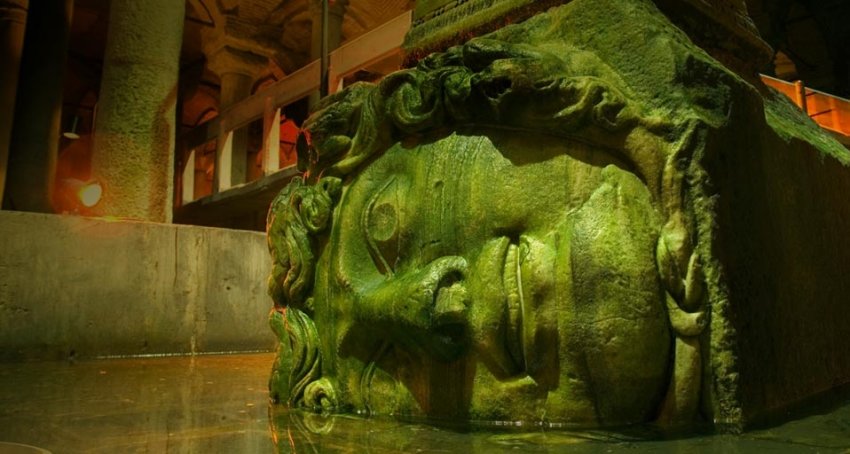 One of the Gorgon heads, but this one is tilted to the side. Image credit: David Sutherland/Corbis
One of the Gorgon heads, but this one is tilted to the side. Image credit: David Sutherland/Corbis
The cistern is located 500 feet (150 m) southwest of the Hagia Sophia on the peninsula of Sarayburnu. The first settlement dates back to this ancient place's Neolithic, c. 6600 BC.
The cistern lies underground, just below the tram lines and busy streets of Istanbul's Old Town. The largest of several hundred cisterns below the surface of Istanbul has 336 massive columns of granite and marble that support a space large enough to hold 27 million gallons of water (carried in from 12 miles away via clay pipes and aqueducts).
Palace once held an emergency water supply for Constantinople, but today has been drained, save a foot or two of rainwater teeming with goldfish.
Inside, two giant Gorgon-head pillar bases pose a mystery. It is suspected that they may have been pulled out of an older pagan temple, where motifs of the famous Gorgon Medusa were used as a protective emblem.
The early Christians practiced putting pagan statues upside-down to boldly state their faith.
Both heads are casually used as column bases; one is positioned upside down, the other tilted to the side.
It is suspected that they may have been pulled out of an older pagan temple, where motifs of the famous Gorgon Medusa were used as a protective emblem.
 Upside down Gorgoneion in the Basilica Cistern. Image credit: DIMSFIKAS - CC BY-SA 3.0
Upside down Gorgoneion in the Basilica Cistern. Image credit: DIMSFIKAS - CC BY-SA 3.0
The placement of these two faces - upside down and sideways, at the base of pillars - may have been a deliberate display of the power of the new Christian Empire.
This particular location of the Medusa heads in the cistern has long been a question of scientific discussion.
We have many guesses today, and the best is that ancient people believed that if the sculptures were placed in two different positions (upside down and sideways), they would ward off evil spirits.
Medusa, a sea nymph, was the most beautiful of the three gorgon sisters. Poseidon courted her and made love to him in the temple of Athena.
The Goddess Athena was furious and transformed Medusa into a monstrous chthonic beast with snakes instead of hair, whose frightening face could turn onlookers to stone. She was beheaded during her sleep by the hero Perseus, who then used her head as a weapon until giving it to the goddess Athena to place on her shield.
In classical antiquity and today, the image of the head of Medusa finds expression in the evil-averting device. Having coupled with Poseidon previously, two beings sprang from her body when she was beheaded. One was a winged horse, Pegasus, that Bellerophon later tamed to help him kill the chimera. The other, Chrysaor of the Golden Sword, remains relatively unknown today.
The mystery of the Medusa heads trapped under the cistern's columns may never be fully understood.
The cistern was cleaned and renovated in 1985 by the Istanbul Metropolitan Municipality and opened to the public in 1987.
Written by – A. Sutherland - AncientPages.com Senior Staff Writer
Updated on January 3, 2024
Copyright © AncientPages.com All rights reserved. This material may not be published, broadcast, rewritten or redistributed in whole or part without the express written permission of AncientPages.com
Expand for referencesMore From Ancient Pages
-
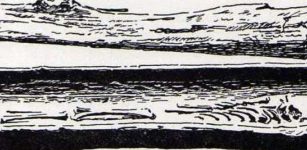 Ancient Burial Of A Princess Who Fell Off A Cliff Raises Many Questions
Archaeology | Apr 18, 2019
Ancient Burial Of A Princess Who Fell Off A Cliff Raises Many Questions
Archaeology | Apr 18, 2019 -
 3.2 Million-Year-Old ‘Lucy’ Could Walk On Two Legs – First Hominin Muscle Reconstruction
Archaeology | Jun 20, 2023
3.2 Million-Year-Old ‘Lucy’ Could Walk On Two Legs – First Hominin Muscle Reconstruction
Archaeology | Jun 20, 2023 -
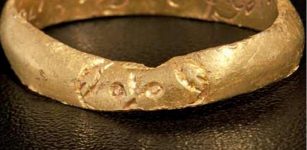 Skulls and inscriptions on three rings found by archaeologists in Wales
Artifacts | Aug 29, 2015
Skulls and inscriptions on three rings found by archaeologists in Wales
Artifacts | Aug 29, 2015 -
 Ancient Byblos: Powerful Phoenician City With Own Kings
Civilizations | Apr 23, 2016
Ancient Byblos: Powerful Phoenician City With Own Kings
Civilizations | Apr 23, 2016 -
 Major Earthquake Struck The Atacama Desert 3,800 Years Ago, Forcing Hunter-Gatherers To Move Inland
Archaeology | Apr 7, 2022
Major Earthquake Struck The Atacama Desert 3,800 Years Ago, Forcing Hunter-Gatherers To Move Inland
Archaeology | Apr 7, 2022 -
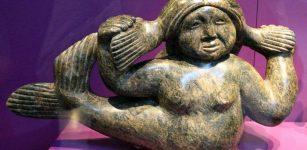 Sedna: Inuit Goddess Sacrificed By Selfish Father Fearing For His Own Life
Featured Stories | Jan 7, 2020
Sedna: Inuit Goddess Sacrificed By Selfish Father Fearing For His Own Life
Featured Stories | Jan 7, 2020 -
 What Was On The Menu For Stonehenge’s Builders, 2500 BC? Milk, Yoghurt And Cheese Only Eaten In Exclusive Ceremonies
Archaeology | Oct 14, 2015
What Was On The Menu For Stonehenge’s Builders, 2500 BC? Milk, Yoghurt And Cheese Only Eaten In Exclusive Ceremonies
Archaeology | Oct 14, 2015 -
 Millennial Pre-Colonial Cultural Influence Is Evident In The Amazon Forest
Archaeology | Jun 28, 2020
Millennial Pre-Colonial Cultural Influence Is Evident In The Amazon Forest
Archaeology | Jun 28, 2020 -
 15,000-Year-Old Petroglyphs Discovered In The Gobi Desert May Be Evidence Ancient Turks Visited Mongolia – Expert Says
Archaeology | Apr 5, 2022
15,000-Year-Old Petroglyphs Discovered In The Gobi Desert May Be Evidence Ancient Turks Visited Mongolia – Expert Says
Archaeology | Apr 5, 2022 -
 New DNA Evidence Rewrites Ancient History Of Pompeii
DNA | Nov 8, 2024
New DNA Evidence Rewrites Ancient History Of Pompeii
DNA | Nov 8, 2024 -
 Secrets Of The Jungle And Hidden Ancient Treasures Of The Serpent People
Ancient Mysteries | Feb 29, 2020
Secrets Of The Jungle And Hidden Ancient Treasures Of The Serpent People
Ancient Mysteries | Feb 29, 2020 -
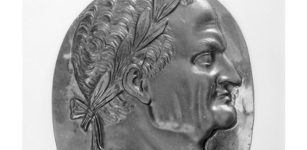 On This Day In History: Vespasian Was Elected The Roman Emperor – On July 1, 69 A.D.
News | Jul 1, 2016
On This Day In History: Vespasian Was Elected The Roman Emperor – On July 1, 69 A.D.
News | Jul 1, 2016 -
 Forgotten Notebook Reveals Da Vinci Understood Gravitiy Long Before Newton
Ancient Technology | Feb 22, 2023
Forgotten Notebook Reveals Da Vinci Understood Gravitiy Long Before Newton
Ancient Technology | Feb 22, 2023 -
 Anu: Supreme Ruler Of The Heavenly Abode In Sumerian Pantheon Of Gods
Featured Stories | Jun 7, 2018
Anu: Supreme Ruler Of The Heavenly Abode In Sumerian Pantheon Of Gods
Featured Stories | Jun 7, 2018 -
 Massive Head Of Hercules Pulled From The Antikythera Shipwreck
Archaeology | Jun 23, 2022
Massive Head Of Hercules Pulled From The Antikythera Shipwreck
Archaeology | Jun 23, 2022 -
 Troublesome Momus: Deity Of Irony, Ridicule, Sarcasm And Harmful Jokes In Greek And Roman Mythology
Featured Stories | Mar 14, 2022
Troublesome Momus: Deity Of Irony, Ridicule, Sarcasm And Harmful Jokes In Greek And Roman Mythology
Featured Stories | Mar 14, 2022 -
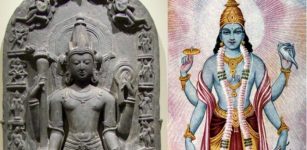 Vishnu: Supreme, Universal Hindu God Whose Avatars Reach Nations, Cultures And Races
Featured Stories | Jul 25, 2019
Vishnu: Supreme, Universal Hindu God Whose Avatars Reach Nations, Cultures And Races
Featured Stories | Jul 25, 2019 -
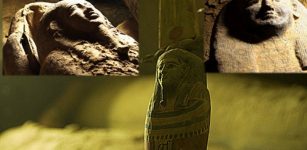 Collection Of 2,500 Years Old Sealed Coffins Unearthed In Saqqara, Egypt
Archaeology | Sep 8, 2020
Collection Of 2,500 Years Old Sealed Coffins Unearthed In Saqqara, Egypt
Archaeology | Sep 8, 2020 -
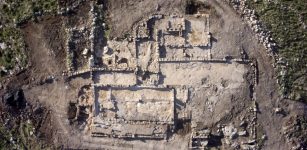 Impressive 2,700-Year-Old Farmhouse And 1,500-Year-Old Monastery Uncovered In Rosh Ha-‘Ayin
Archaeology | Dec 30, 2015
Impressive 2,700-Year-Old Farmhouse And 1,500-Year-Old Monastery Uncovered In Rosh Ha-‘Ayin
Archaeology | Dec 30, 2015 -
 Birka: Major Trading Center During The Viking Age
Featured Stories | Feb 12, 2018
Birka: Major Trading Center During The Viking Age
Featured Stories | Feb 12, 2018
